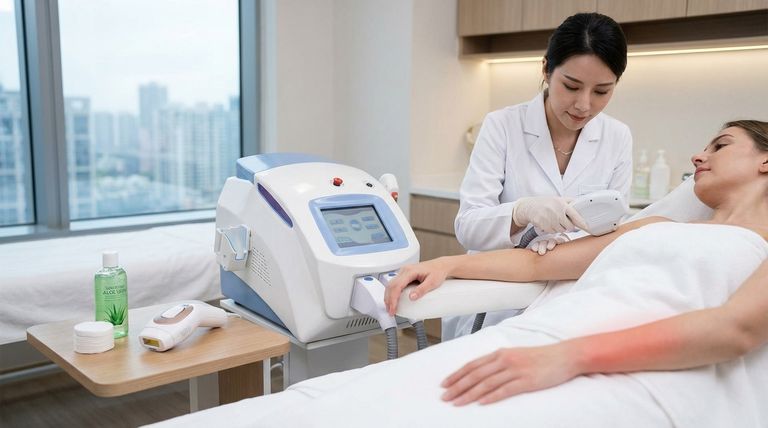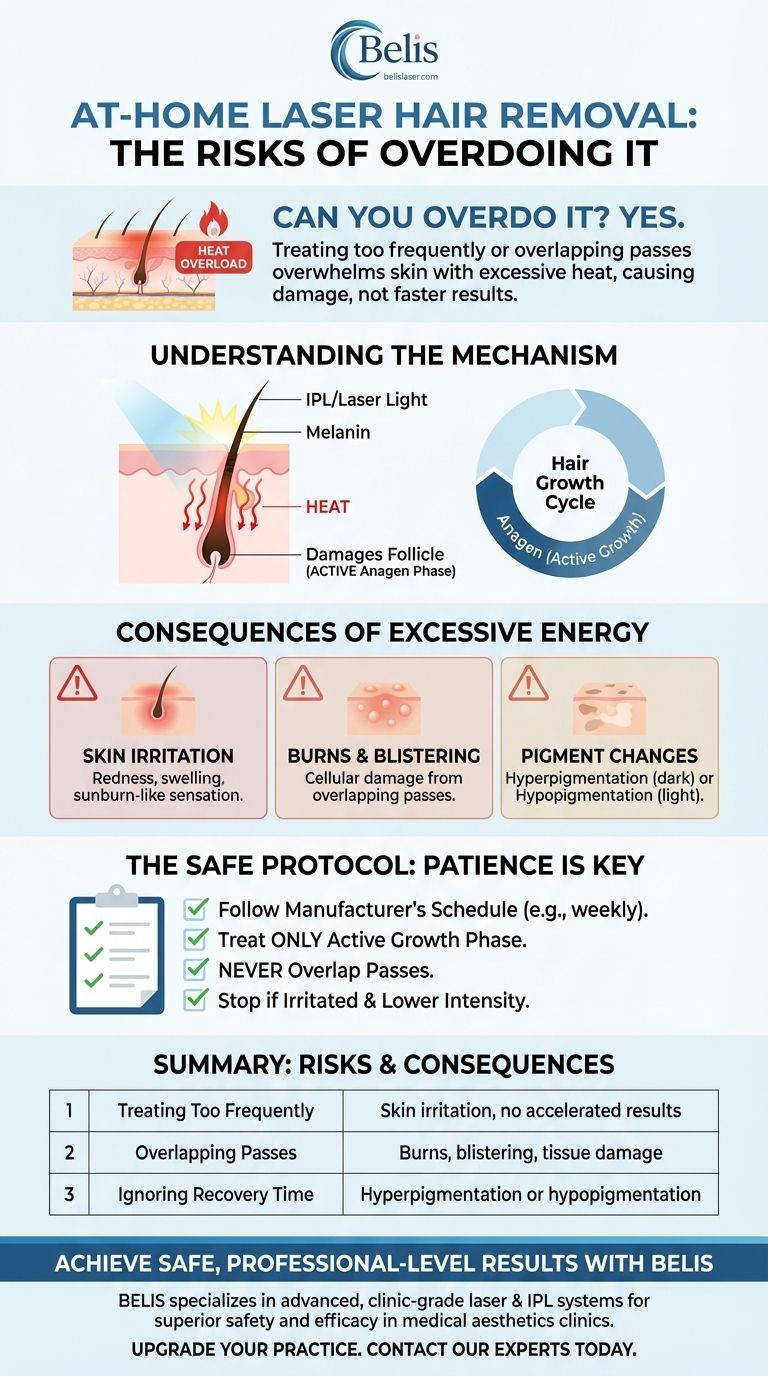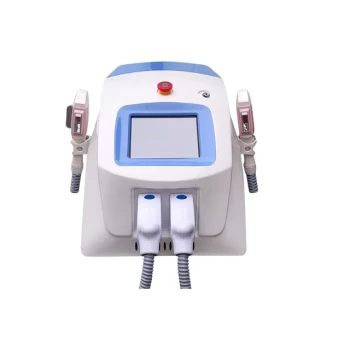Yes, you can absolutely overdo at-home laser hair removal. This can occur in two primary ways: treating your skin too frequently over a short period or overlapping passes on the same area during a single session. Exposing your skin to excessive laser energy can damage the surrounding tissue, leading to irritation, redness, swelling, and other adverse effects.
The core principle to understand is that at-home laser devices use intense light to generate heat in the hair follicle. Overtreating overwhelms the skin's ability to dissipate this heat, causing damage to the surrounding area without accelerating your results.

How At-Home Devices Target Hair
To understand the risks of overtreatment, you must first understand the mechanism. At-home devices, most of which use Intense Pulsed Light (IPL), are not a brute-force tool. They rely on a precise biological process.
The Role of Melanin
Your device emits a flash of light that is absorbed by the melanin (pigment) in your hair. This light energy converts into heat, which travels down the hair shaft to damage the follicle, inhibiting future growth.
The Importance of the Hair Growth Cycle
Hair grows in cycles, and these treatments are only effective when the hair is in its active growth phase (anagen). At any given time, only a fraction of your hairs are in this phase. This is why sessions must be spaced out—to allow a new batch of hairs to enter the correct cycle.
The Consequences of Overtreating
Exceeding the recommended usage converts a targeted treatment into an indiscriminate burn, leading to several potential issues.
Immediate Skin Irritation
The most common result of overtreatment is redness, swelling, and a sensation similar to a sunburn. This is a sign that the laser energy has damaged superficial skin tissue, not just the hair follicle.
Risk of Burns or Blistering
In more severe cases, concentrating too much energy in one area by overlapping passes can lead to minor burns or blistering. This is a clear indication of cellular damage.
Changes in Skin Pigmentation
Damaging the skin can disrupt its melanin-producing cells. This can lead to hyperpigmentation (dark spots) or hypopigmentation (light spots), which can sometimes be long-lasting.
Understanding the Trade-offs: Enthusiasm vs. Protocol
The desire for quick results often tempts users to deviate from the instructions, but this is counterproductive and dangerous.
The "More is Better" Myth
Treating the same area every few days will not speed up hair removal. Since you are only targeting hairs in the active growth phase, more frequent sessions simply irritate the skin without affecting the dormant follicles you need to wait for.
The Danger of Overlapping
When you pass the device over the same patch of skin multiple times in one session, you are doubling or tripling the heat energy delivered to that spot. This significantly increases the risk of burns and irritation and offers no additional benefit.
Trusting the Manufacturer's Schedule
The recommended schedule provided with your device (e.g., once a week for 12 weeks) is based on the average length of human hair cycles. It is designed to maximize effectiveness while ensuring your skin has adequate time to recover between sessions.
The Right Protocol for Your Goal
Adhering to a safe and effective protocol is simple. Your approach should be guided by your primary objective.
- If your primary focus is safety and avoiding side effects: Strictly follow the manufacturer's recommended treatment schedule and never treat the same area more than once per session.
- If your primary focus is achieving the best results: Be patient and consistent with the correct schedule, understanding that targeting hair in the right growth phase over time is the only path to success.
- If you experience significant redness or irritation: Stop treatments immediately, allow your skin to fully heal, and consider resuming at a lower intensity level.
Patience and proper technique are the true keys to achieving safe and effective results with at-home laser hair removal.
Summary Table:
| Risk of Overtreatment | Consequence |
|---|---|
| Treating Too Frequently | Skin irritation, no accelerated results |
| Overlapping Passes | Burns, blistering, tissue damage |
| Ignoring Recovery Time | Hyperpigmentation or hypopigmentation |
Achieve Safe, Professional-Level Results with BELIS
While at-home devices require careful handling, professional medical aesthetic equipment delivers superior safety and efficacy. BELIS specializes in advanced, clinic-grade laser and IPL systems for medical aesthetics clinics and premium beauty salons. Our technology ensures precise energy delivery to maximize hair removal results while minimizing risks.
Upgrade your practice with equipment that prioritizes client safety and satisfaction.
Contact our experts today to discover the right professional solution for your business.
Visual Guide

Related Products
- Clinic Use IPL and SHR Hair Removal Machine with Nd Yag Laser Tattoo Removal
- IPL SHR Hair Removal Machine for Permanent Hair Removal
- IPL SHR+Radio frecuency machine
- Clinic Use IPL SHR ND YAG Laser Hair Removal RF Skin Tightening Machine
- Diode Laser SHR Trilaser Hair Removal Machine for Clinic Use
People Also Ask
- Does IPL work on all hair types? The Truth About Melanin & Hair Removal Success
- What is intense pulsed light good for? A Versatile Solution for Sun Spots, Redness, and Hair
- Is IPL safe on breasts? A Guide to Safe Treatment and Avoiding Risks
- What are the negative effects of IPL? Understanding Risks for Safe Treatment
- Does hair removal work better than shaving? Get Smoother, Longer-Lasting Results



















